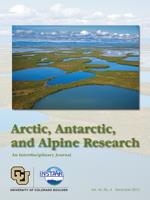
The Legacy of Destructive Snow Goose Foraging on Supratidal Marsh Habitat in the Hudson Bay Lowlands
No abstract available
Shipwreck at Cape Flora: The Expeditions of Benjamin LeighSmith, England's Forgotten Arctic Explorer
No abstract available
No abstract available
No abstract available
